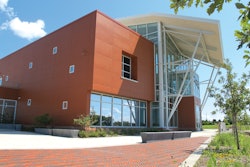WASHINGTON, DC (October 5, 2011) -- A new independent nationwide survey reveals that nearly three out of four Americans support federal investment in school building improvements focused on creating healthier learning environments, saving tax dollars or lowering carbon emissions. The survey, sponsored by United Technologies Corp. and the U.S. Green Building Council's Center for Green Schools, found that one in three of those surveyed said the majority of U.S. schools are in "poor" shape. Only six percent said U.S. schools are in "excellent" shape.
The independent survey of more than 1,000 Americans was conducted via telephone from Sept.23 - 25, 2011, by GfK Custom Research North America.
"Americans understand the importance of our nation's school infrastructure and see the urgent need for significant investments," said Rick Fedrizzi, President, CEO and Founding Chair, U.S. Green Building Council. "Too many of our schools are outdated, woefully energy inefficient, unhealthy and negatively affect our children's ability to learn -- and ultimately to compete in a global marketplace. In 2008 alone the U.S. deferred an estimated $254 billion in school facility maintenance and inadequate investment into maintaining our nation's school infrastructure has led to a significant number of schools in need of major repair and replacement. That's unacceptable."
The U.S. Government Accountability Office reports that at least 25,000 U.S. schools are in need of extensive repair and replacement.
On average, green schools save $100,000 per year on operating costs -- enough to hire at least one new teacher, buy 200 new computers, or purchase 5,000 textbooks. Green schools use 33 percent less energy and 32 percent less water than conventionally constructed schools, significantly reducing utility costs. If all new U.S. school construction and renovation went green today, the total energy savings alone would be $20 billion over the next 10 years.
Additionally, a single green school can reduce carbon emissions by an estimated 585,000 pounds annually and, in a survey of green school administrators, 70 percent reported that green school construction reduced student absenteeism and improved student performance.
"A green school is an energy efficient school -- meaning less money is spent on overhead like heating and cooling and more can be spent on keeping teachers in the classroom and getting them the resources they need," said Sandy Diehl, Vice President, Integrated Buildings Solutions, United Technologies Corp., and a Center for Green Schools advisory board member. "Investments in green school buildings generate positive outcomes in classrooms and communities everywhere. Investing in our school infrastructure today is an imperative."
The Center for Green Schools was launched in 2010 by the U.S. Green Building Council with United Technologies Corp. as the founding sponsor. The Center's goal is to drive change in how we design, construct and operate our schools so they will generate savings through improved energy efficiency and enhance student learning experiences in K-12 and higher education settings.


















